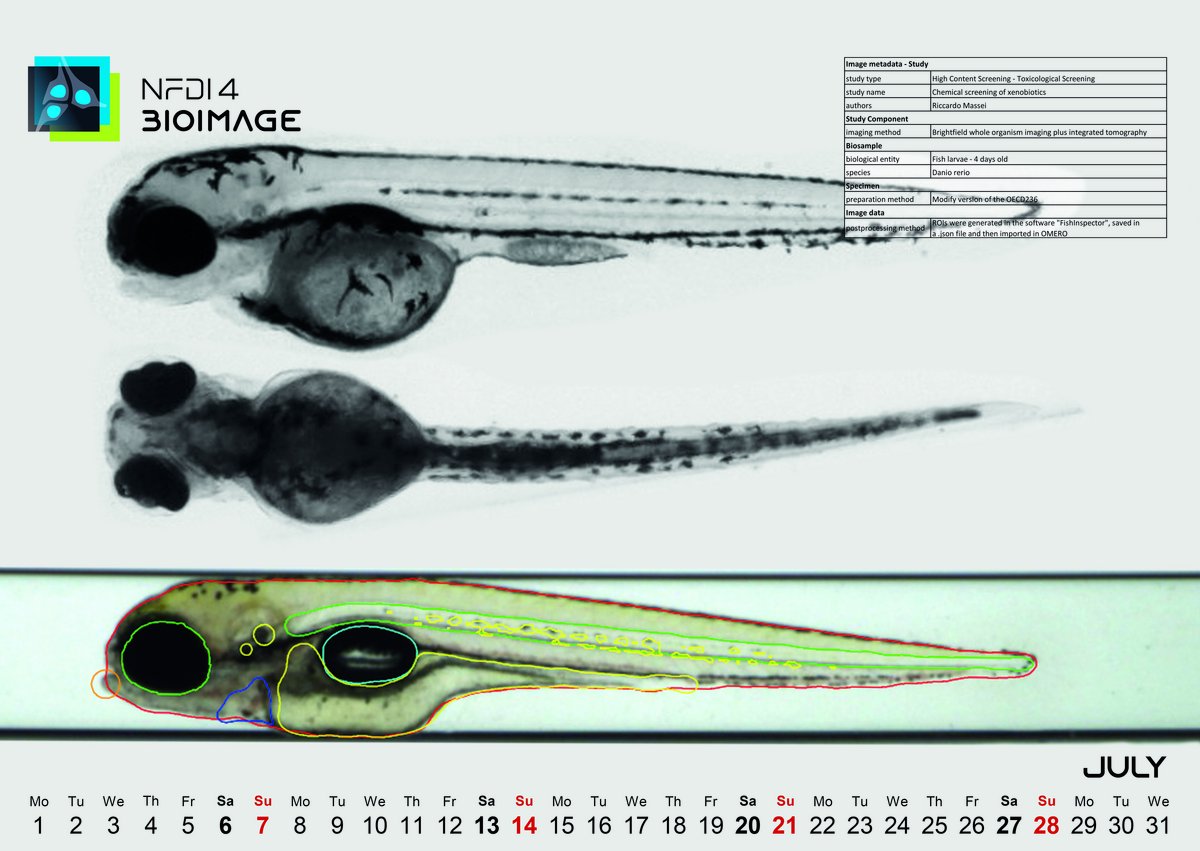
July 2024: Making toxicological phenotypes FAIR-y Tale-Worthy!
This month’s image depicts a lateral and dorsal image of a 4 days old zebrafish (Danio rerio) embryo acquired with bright field microscopy. A novel high content screening machine named Automated Imaging Robot (AIR) allows the direct sampling of individual zebrafish embryos from a multi-well plate and the automatic positioning of the sample in front of a microscope. The AIR can process 100 zebrafish embryos in 1-2 h, making it a powerful tool for HCS studies of small organisms. Images are then further processed using “FishInspector”, a software which allows the user to annotate and quantify morphological structures in the zebrafish (i.e. eye, yolk and swim bladder) and calculate additional body features such as length, tail curvature and body shape. The final goal is to assess if different chemicals lead to specific toxicological patterns in zebrafish embryos. The image was captured at the Center of Environmental Research - UFZ, Department Ecotoxicology, in Leipzig in the frame of the EU HORIZON 2020 project “PrecisionTox”, where about 200 chemicals will be tested for a comparative assessment using this specific assay. The project aims at inferring human health relevant information of chemical from alternative non-mammalian model species.
Zebrafish are widely used in toxicological studies to understand the adverse effect of chemical exposure. But how can FAIR principles be included in such studies? In this specific case, images together with the information on chemical exposure can be uploaded to OMERO. Regions of interests (ROIs) are also uploaded to give to the user a full overview of morphological effect after chemical exposure. Associated SOPs are reported in the Electronic Lab Notebook (ELN) eLabFTW to be re-used an easily shared with collaborators and on-demand. Additional information on the chemical proprieties is given by adding a link in OMERO to external and internal effect database (i.e. PubChem, INTOB). This allows future users to re-use these data avoiding repetition of experiments already conducted. Finally, analysis workflows, study information, raw data and workflows will be publicly available on the BioImage Archive and GitLab.
Dr Riccardo Massei, Data Steward at NFDI4BIOIMAGE and the Center for Environmental Research (UFZ), Leipzig
